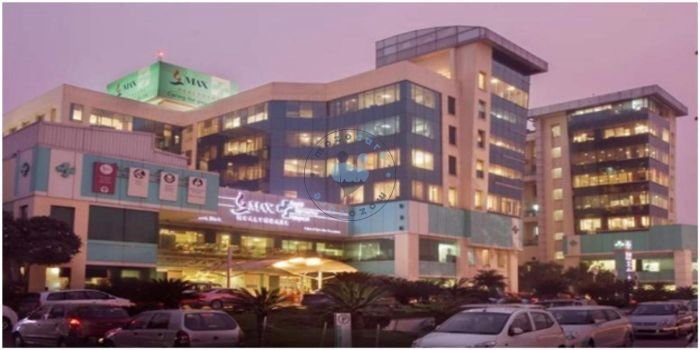

There are many factors that can affect the costs
Coronary Artery Disease (CAD) Treatment Abroad
The damaged blood vessel that carries blood, oxygen and nutrients to the heart leads to Coronary Artery Disease (CAD). Cholesterol is the main cause for the Coronary Artery Disease.
The cholesterol leads to building up plaque which narrows coronary arteries resulting in slowing down the blood flow to the heart.
Coronary artery disease (CAD) is a common heart condition that occurs when plaque builds up inside the coronary arteries, restricting blood flow to the heart. If left untreated, CAD can lead to heart attack, heart failure, and even death.
The treatment of CAD varies depending on the severity of the condition, and may include medication, lifestyle changes, cardiac rehabilitation, or more invasive procedures such as coronary artery bypass grafting (CABG), angioplasty and stenting, or percutaneous coronary intervention (PCI).
Many people choose to seek CAD treatment abroad for a number of reasons, including lower costs, access to specialized medical expertise, and shorter wait times. Some of the most common types of CAD treatment abroad include:
Coronary artery bypass grafting (CABG): This surgical procedure involves taking a healthy blood vessel from another part of the body and using it to bypass the blocked coronary artery, allowing blood to flow to the heart.
Angioplasty and stenting: This minimally invasive procedure involves using a small balloon to open up a blocked artery, followed by the insertion of a stent to keep the artery open.
Percutaneous coronary intervention (PCI): This procedure is similar to angioplasty and stenting, but may involve the use of other devices such as atherectomy or thrombectomy devices to remove blockages.
Coronary artery disease medication: Various medications are available for treating CAD, including cholesterol-lowering drugs, blood thinners, and beta-blockers.
Lifestyle changes for CAD prevention and management: Making healthy lifestyle changes such as quitting smoking, adopting a healthy diet, and getting regular exercise can help prevent and manage CAD.
Cardiac rehabilitation program: This program helps patients recover from a heart attack, heart surgery, or other cardiac event by providing supervised exercise, education, and support.
Coronary artery disease screening and diagnosis: Early detection of CAD is important for effective treatment. Screening and diagnostic tests may include electrocardiogram (ECG), stress tests, or angiography.
Cardiac catheterization: This procedure involves the insertion of a catheter into the heart to measure blood pressure and evaluate the blood flow through the heart and coronary arteries.
Before undergoing CAD treatment abroad, it is important to do research on the hospital and doctors who will be providing the treatment. Patients should also consult with their primary care physician and obtain all necessary medical records and test results. In addition, patients should consider travel arrangements, such as obtaining a visa, arranging for transportation to and from the hospital, and making accommodations for family members or caregivers who may accompany them
The specific procedure used to treat CAD will depend on the severity of the condition and the patient's overall health. Some procedures, such as medication and lifestyle changes, can be done on an outpatient basis, while others may require a hospital stay. CABG, angioplasty and stenting, and PCI are all invasive procedures that require specialized medical equipment and a team of trained medical professionals.
CABG surgery typically takes several hours and involves making an incision in the chest to access the heart. The surgeon then takes a healthy blood vessel from another part of the body, such as the leg, and uses it to bypass the blocked coronary artery. The patient is then monitored closely in the hospital for several days before being discharged.
Angioplasty and stenting, on the other hand, is a minimally invasive procedure that typically takes less than an hour to complete. The surgeon makes a small incision in the groin or wrist and threads a catheter with a balloon attached through the artery to the site of the blockage. The balloon is inflated to open up the artery, and a small metal mesh tube called a stent is then inserted to keep the artery open. The patient can usually return home the same day or the next day.
Recovery from CAD treatment abroad will depend on the specific procedure performed, as well as the patient's overall health and medical history. CABG surgery typically requires a longer recovery time than angioplasty and stenting or PCI, as the patient may need to stay in the hospital for several days and may experience more discomfort and pain during the recovery period.
Patients who undergo minimally invasive procedures such as angioplasty and stenting or PCI may be able to return to normal activities within a few days or weeks. However, it is important to follow all post-operative instructions provided by the medical staff to ensure proper healing and prevent complications.
Coronary heart disease, heart disease or ischemic heart disease are other names for coronary artery disease.
Coronary artery supplies blood to the heart. In coronary artery disease, narrowing or blockage of the arteries occur. The arteries gets blocked or narrow due to the deposition of fatty material.
The following factors increases the risk of CAD – • Diabetes • Obesity • High cholesterol • Smoking tobacco • Family history • Age (In women after menopause and in men >45 years) • High blood pressure
Treatment option for CAD include – • Medication – Medicines are given to lower blood pressure, cholesterol level and prevent blood clots. • Lifestyle changes – this is the first step of treatment • Procedures – Balloon angioplasty and stenting • Surgery – Coronary artery bypass graft surgery
CAD can cause heart attack, heart failure, angina, problem in the heart rhythm, cardiogenic shock and sudden cardiac arrest.
Coronary artery disease is not treatable. Treatment measures are taken to relieve the symptoms of CAD.
It cannot be prevented completely. Various measures such lifestyle changes, regular check-up must be done to lower the risk of occurrence of the disease.
Yes, CAD is a serious heart condition causing most deaths. A person may feel healthy even if the cholesterol level is high.
Depending on your work profile, your doctor will suggest if you can return to work. Heavy physical work should be avoided.
Pain in chest, weakness, shortness of breath, pain in the arms, nausea are some of the symptoms of coronary artery disease.
| Fortis Escorts Heart Institute | |
| Medanta - The Medicity | |
| Max Super Specialty Hospital Saket | |
| Max Super Specialty Hospital Shalimar Bagh | |
| Max Super Specialty Hospital Patparganj | |
| Wockhardt Hospital South Mumbai | |
| Wockhardt Super Specialty Hospital Mira Road | |
| Fortis Hospital Bangalore | |
| Fortis Hospital Bangalore | |
| Fortis Hospital Bangalore |

New Delhi, India

Gurgaon, India

New Delhi, India

New Delhi, India

New Delhi, India